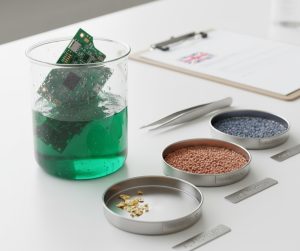The ceiling fan has undergone a remarkable transformation from its utilitarian past to become a sophisticated design element that seamlessly blends functionality with contemporary aesthetics. Today’s modern ceiling fans are no longer afterthoughts relegated to practical spaces, but rather carefully crafted fixtures that serve as focal points in stylish interiors while providing efficient air circulation and climate control.
The Evolution of Ceiling Fan Design
Contemporary ceiling fan design has moved far beyond the traditional brass and wood blade combinations that dominated homes for decades. Modern manufacturers now prioritize sleek lines, innovative materials, and cutting-edge technology to create fans that complement today’s interior design trends. The shift toward minimalism, industrial aesthetics, and smart home integration has driven designers to reimagine what a ceiling fan can be in the modern home.
The most striking aspect of contemporary ceiling fan design is the emphasis on clean, geometric forms. Many modern fans feature streamlined profiles with minimal visual bulk, allowing them to integrate seamlessly into spaces without overwhelming the room’s design scheme. These designs often incorporate materials like brushed steel, matte black finishes, aged bronze, and even acrylic or glass elements that create visual interest while maintaining sophistication.
Blade Innovations and Material Choices
Modern ceiling fans have revolutionized blade design through both form and function. Traditional wooden blades have given way to engineered materials that offer superior performance and durability. Contemporary fans often feature blades made from composite materials, aluminum, or even fabric-covered options that provide unique textural elements to interior spaces.
The shape and size of blades have also evolved significantly. Many modern designs incorporate curved or angled blades that improve airflow efficiency while creating dynamic visual movement even when the fan is stationary. Some manufacturers have embraced asymmetrical blade designs or varying blade lengths within a single fan, creating artistic elements that challenge conventional expectations of what a ceiling fan should look like.
Energy star rated ceiling fans have become increasingly popular as homeowners seek to reduce their environmental impact while maintaining comfort. These certified fans meet strict energy efficiency guidelines set by the Environmental Protection Agency, often using advanced motor technology and optimized blade designs to move air more effectively while consuming less electricity than traditional models.
Motor Technology and Performance
The heart of any modern ceiling fan lies in its motor technology, and contemporary designs have made significant strides in this area. DC motors have largely replaced traditional AC motors in high-end ceiling fans, offering superior energy efficiency, quieter operation, and more precise speed control. These advanced motors often include variable speed settings that allow users to fine-tune airflow to their exact preferences.
Smart technology integration has become a hallmark of modern ceiling fan design. Many contemporary fans can be controlled through smartphone apps, integrated with home automation systems, or operated via voice commands through smart home assistants. This technological advancement allows for sophisticated scheduling, remote operation, and integration with other climate control systems throughout the home.
Lighting Integration and Illumination Design
Modern ceiling fans have transformed the traditional approach to integrated lighting. Rather than simple globe fixtures or basic light kits, contemporary designs often feature sophisticated LED arrays, adjustable spotlights, or artistic lighting elements that serve as both functional illumination and decorative features.
LED technology has been particularly transformative for ceiling fan lighting. These energy-efficient lights produce minimal heat, reducing strain on the fan motor while providing bright, customizable illumination. Many modern fans offer color temperature adjustment, allowing users to shift from warm ambient lighting to bright task lighting as needed throughout the day.
Some innovative designs have eliminated traditional light fixtures entirely, instead incorporating LED strips into the fan blades themselves or creating subtle up lighting effects that provide ambient illumination without visible bulbs or fixtures. These approaches create a more streamlined appearance while still offering practical lighting solutions.
Size Considerations and Spatial Integration
Contemporary ceiling fan design places significant emphasis on proper sizing and spatial relationships within rooms. Modern fans are available in an extensive range of sizes, from compact 30-inch models suitable for small bedrooms or offices to massive 84-inch industrial-style fans designed for great rooms or commercial spaces.
The trend toward larger, more open floor plans in contemporary homes has driven demand for fans that can effectively circulate air across expansive spaces. Many modern designs feature extended blade spans or multiple fan heads working in coordination to provide comprehensive air movement throughout large areas.
Flush-mount and low-profile designs have gained popularity as homeowners seek to maximize ceiling height while still enjoying the benefits of ceiling fan circulation. These designs often feature innovative blade configurations that maintain effectiveness despite their compressed profiles, making them ideal for rooms with lower ceilings or contemporary spaces where visual minimalism is prioritized.
Style Integration Across Design Themes
Modern ceiling fans excel at adapting to various contemporary design themes. Industrial-style fans incorporate raw materials like galvanized steel, exposed hardware, and vintage-inspired cage lighting to complement loft-style spaces and urban interiors. These fans often feature bold, mechanical aesthetics that celebrate their functional nature while serving as striking design elements.
Scandinavian-inspired designs emphasize natural materials, clean lines, and neutral color palettes. Modern fans in this category often feature light wood elements, white or natural metal finishes, and simplified forms that enhance the serene, uncluttered aesthetic characteristic of Nordic design principles.
Mid-century modern revival has influenced ceiling fan design through geometric blade shapes, period-appropriate color combinations, and sleek profiles that echo the optimistic design sensibilities of the 1950s and 1960s. These fans often incorporate atomic-age inspired forms or space-age materials that create nostalgic yet thoroughly contemporary design statements.
Installation and Maintenance Considerations
Modern ceiling fans are designed with installation and maintenance convenience in mind. Many contemporary models feature tool-free blade installation, simplified wiring systems, and modular components that make both initial installation and ongoing maintenance more straightforward for homeowners.
Advanced bearing systems and improved motor designs have significantly reduced maintenance requirements compared to older ceiling fan models. Many modern fans are designed to operate for years without requiring lubrication or significant upkeep, making them practical choices for contemporary lifestyles.
Contemporary ceiling fan design represents a perfect marriage of form and function, offering homeowners the opportunity to enhance their living spaces with fixtures that provide both practical climate control and sophisticated aesthetic appeal. As technology continues to advance and design trends evolve, modern ceiling fans will undoubtedly continue pushing boundaries while serving the fundamental human need for comfortable, well-ventilated living spaces.




